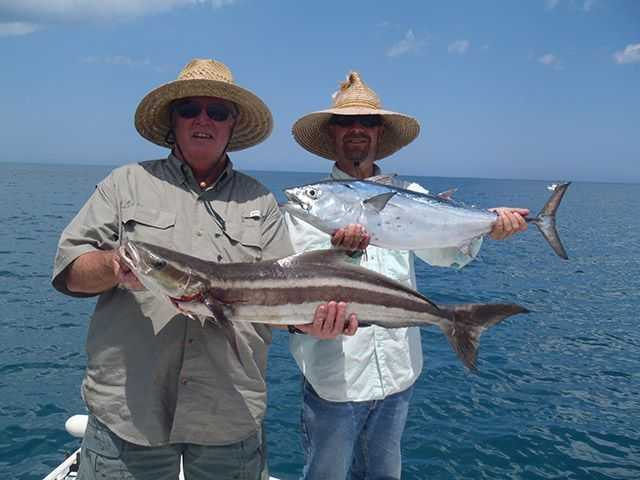
[dropcap]A[/dropcap]nglers look forward to May in Sebastian because larger species of fish become available in every venue. You can break free of the inland waters regularly to seek out the big boys migrating up the coast, target big snook around shoreline structure and in the inlet, and confidently pursue tarpon throughout the Sebastian River system. All fishing methods, from live bait to fly rod are also at home in each of these situations, thus making it possible for anglers of all experience levels to score a trophy size catch. The fish are here so let’s look at what and where we should be fishing during these big fish days of late spring/early summer.
Sebastian River
Late spring is “the season” for the Sebastian River and many of the other freshwater feeders that flow into the central Indian River Lagoon. Tarpon and snook of all sizes are at their highest concentrations of the season and they are eager to feed on the vast numbers, and varieties of baitfish that take up residence in this lower salinity, tannin stained water. Seven to ten-inch mullet are the most obvious of these baitfish species and are the preferred choice of the larger snook and tarpon in the river. Large live mullet fished on stout tackle in the lower Sebastian River are the ticket for the trophy snook and the occasional 50-plus-pound tarpon. Large topwater and shallow diving plugs are excellent choices after dark. Up the north and south forks of the Sebastian River, live finger mullet, small diving plugs, D.O.A. shrimp and TerrorEyz baits will produce snook and tarpon of all sizes throughout the day. This is also the prime time for fly fishermen to stretch their line on the juvenile tarpon in the Sebastian River. Two to four-inch baitfish patterns in white are the local favorite.
The Indian River Lagoon
Some of the largest trout of the year are taken in May, with topwater plugs and jerkbaits being favorite artificial baits. Live mullet and shrimp will also account for their share of seatrout and reds. Snook will become a more consistent catch in the lagoon in May. Docks, mangrove shorelines, downed trees and spoil islands will begin to hold more snook of all sizes. D.O.A. shrimp, weedless jerkbaits, and topwater plugs are my favorites to draw strikes from snook in and around cover. Twenty-pound power pro braided line is a must for muscling snook from barnacle encrusted cover.
Sebastian Inlet
Snook and redfish have been a consistent catch at the inlet already this spring both night and day. Daytime anglers using live croakers have been scoring on both incoming and outgoing tides around the tips of both jetties. Nighttime boaters drifting live bait through the center of the A1A Bridge are catching good numbers of reds and snook. Land bound anglers are throwing bucktails, Storm and Tsunami swim baits and diving plugs with good results after dark. Expect this action to continue and get better as water temperatures increase with the approach of summer.
The Near Shore Atlantic
As the winds of April subside, the near shore waters clear and warm attracting a variety of baitfish and the game fish that prey on them. Glass minnows and threadfin herring or greenies are the two bait species most commonly at the bottom of the food chain in the near shore waters off Sebastian. Near shore anglers always have a rod rigged with a Sabiki rig while running the beach. This is for catching the greenies that are the best bait for just about everything out there. Watch for schools of greenies dimpling the surface or pelicans diving. Tarpon to 150 pounds are probably the most sought after coastal fish, but jack crevalle to 40 pounds are also worth tossing baits to. What I like to do in the near shore waters starting this time of year is slow trolling for king mackerel. Live mullet and/or greenies on a stinger rig and slow trolled at between 1.5 and 2.5 knots will catch anything you happen across especially kingfish to 40 or so pounds. I run light conventional and heavy spinning gear with 20-pound monofilament for the big stuff outside the inlet. Another crowd pleaser that happens between May and July is the bonito (little tunny) and everything else that come in shore to gorge on the swarms of glass minnows that generally make an appearance in the late spring and early summer. It is a true blitz with Spanish and bonito taking small flies, plugs and jigs up top while tarpon, kingfish, jacks and sharks hang underneath eating the greenies and other baitfish that come to eat the scraps left over by the surface predators. This is a great opportunity for fly fishermen to catch everything from 1-pound Spanish to 100-pound tarpon and sharks.

[easy-social-share]




